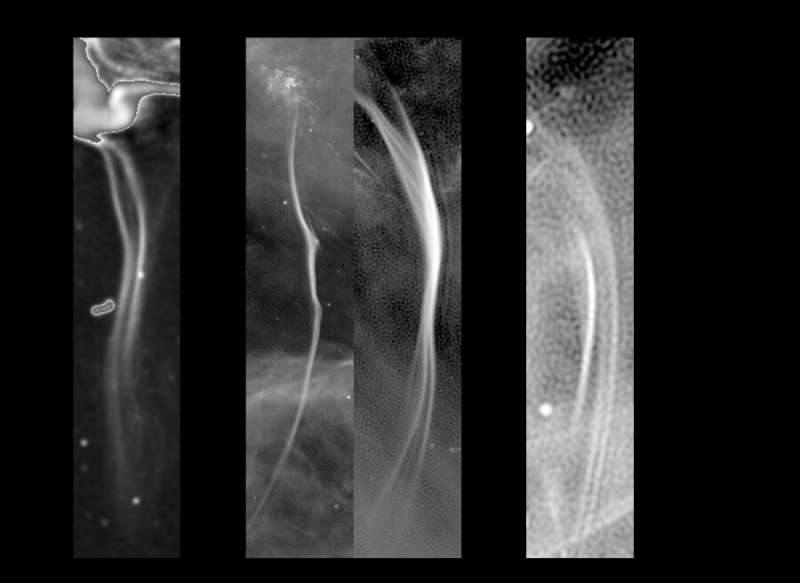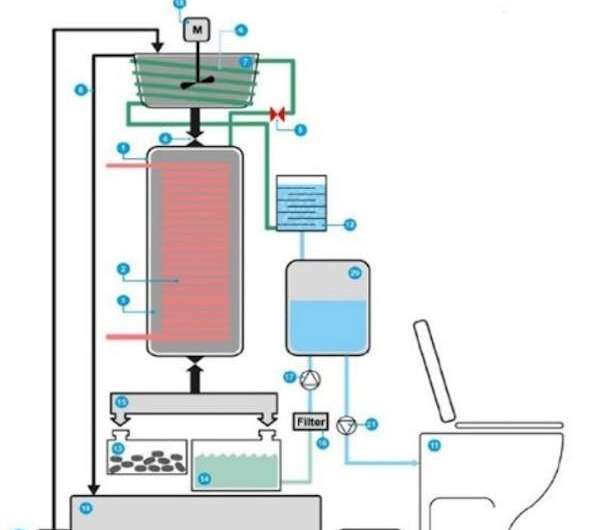

Singapore's Prime Minister Lee Hsien Loong, left, and Taiwan's envoy Morris Chang, founder of one of the world's largest chip manufacturers TSMC, talk before an informal dialogue session at APEC Haus, Nov. 18, 2018, in Port Moresby, Papua New Guinea. Chang, 91, will once again be Taiwan’s envoy at this week's APEC held in Bangkok, Thailand, Nov. 16-19, 2022. (AP Photo/Mark Schiefelbein, File)More
JOHNSON LAI and JOE McDONALD
Wed, November 16, 2022
TAIPEI, Taiwan (AP) — Taiwan’s envoy to a gathering of Asia-Pacific leaders is the 91-year-old billionaire founder of a computer chip manufacturing giant that operated behind the scenes for decades before being thrust into the center of U.S.-Chinese tension over technology and security.
Morris Chang’s hybrid role highlights the clash between Taiwan's status as one of China's top tech suppliers and Beijing's threats to attack the self-ruled island democracy of 22 million people, which the mainland's ruling Communist Party says it part of its territory.
Taiwan’s decision to send Chang instead of a political leader to the Asia-Pacific Economic Cooperation summit in Thailand reflects the island's unusual status. The United States and other governments have agreed to Chinese demands not to have official relations with Taiwan or have their leaders meet its president.
Chang transformed the semiconductor industry when he founded Taiwan Semiconductor Manufacturing Corp. in 1987 as the first foundry to produce chips only for customers without designing its own. That allowed smaller designers to compete with industry giants without spending billions of dollars to build a factory.
- ADVERTISEMENT -
TSMC has grown into the biggest chip producer, supplying Apple Inc., Qualcomm Inc. and other customers and turning Taiwan into a global tech center. TSMC-produced chips are in millions of smartphones, automobiles and high-end computers.
Despite that, TSMC ranks high on any list of the biggest companies that are unknown outside their industries.
Chang, a Texas Instruments Inc. veteran who served as TSMC chairman until 2018, represented then-President Chen Shui-bian at the Asia-Pacific Economic Cooperation meeting in 2006. He was re-appointed to the same job in 2018, 2019 and 2020 by President Tsai Ing-wen.
“Taiwan’s semiconductor industry, especially TSMC, plays a pivotal role in the domestic and even the world economy,” Tsai told reporters on Oct. 20. "At this important moment, Chang is an irreplaceable candidate to serve as the representative of our country’s APEC leaders.”
Britain's trade minister, Greg Hands, said London wants closer cooperation with Taiwan on semiconductors during a visit this month. Britain is home to Arm, a leading chip designer.
Taiwan is in a “very challenging environment” and APEC is the “most important international conference venue for Taiwan,” Chang said at the Oct. 20 briefing with Tsai.
“Taiwan needs to build a secure and resilient supply chain with trusted partners, especially in the electronics sector,” he said.
Last year, Chang warned support was eroding for globalization and free markets that helped TSMC prosper.
“Globalization seems to be a bad word and ‘free market economy’ is beginning to carry conditions,” Chang said while accepting an award from the Asia Society.
“Many companies in Asia and America face challenges as to how to operate in the new environment,” Chang said. “Still, I’m confident that solutions will be found.”
TSMC was thrust into geopolitics in 2020 when then U.S. President Donald Trump blocked the company and other vendors from using U.S. technology to make chips for Chinese tech giant Huawei Technologies Ltd., which produces smartphones and network gear for phone and internet carriers. American officials say Huawei is a security threat and might enable Chinese spying, an accusation the company denies.
Most of the world’s smartphones and other consumer electronics are assembled in Chinese factories. But they need components and technology from the United States, Europe and Asian suppliers — especially Taiwan, the biggest chip exporter.
Huawei, China’s first global tech brand, designs chips but needs TSMC and other contractors to make them. Their foundries need American manufacturing technology, which gives Washington leverage to disrupt Chinese high-tech industry.
Processor chips are China’s biggest import at $300 billion a year, ahead of oil. The ruling Communist Party sees that as a strategic weakness and is spending heavily to create its own chip producers, but they are generations behind TSMC and other global leaders.
Trump’s successor, Joe Biden, left Trump's curbs in place and imposed more restrictions that extend to other Chinese companies.
TSMC, headquartered in Hsinchu, adjacent to the Taiwan capital, Taipei, says it made 12,302 different products last year for 535 customers. The company reported an $18.7 billion profit last year on $49.8 billion in revenue.
Chang was born in Ningbo, south of Shanghai, and moved to Hong Kong after a civil war on the mainland ended with the Communist Party taking power in 1949.
The mainland's former ruling Nationalist Party fled to Taiwan. The two sides have been ruled separately since then. They have no official relations but are linked by billions of dollars of trade and investment.
Chang studied at Harvard University and the Massachusetts Institute of Technology before receiving a Ph.D. in electrical engineering from Stanford University in 1964.
Chang spent a quarter-century at Texas Instruments, rising to become a vice president in charge of its semiconductor business, before being invited to Taiwan in the 1980s to lead a technology research institute.
In 1988, TSMC became Taiwan's first company traded on the New York Stock Exchange. Chang's stake in the company is worth $1.6 billion.
___
McDonald reported from Beijing.


President of Taiwan (R.O.C. authorities) and Chairperson of the Democratic Progressive Party
Tue, November 15, 2022
By Ben Blanchard and Sarah Wu
TAIPEI (Reuters) -Taiwan President Tsai Ing-wen has decried what she called "rumours" about the risk of investing in the island's semiconductor industry and said the government was working hard to ensure investments continued.
Taiwan, home to the world's largest contract chipmaker TSMC as well as several other chip manufacturers, plays an outsized role in providing chips used in everything from cars and smartphones to fighter jets.
But the Chinese military's menacing of the island to assert Beijing's sovereignty claims, especially after U.S. House Speaker Nancy Pelosi visited Taipei in August, is causing the chip industry to rethink the risk surrounding Taiwan.
Rick Tsai, the chief executive of Taiwan's largest chip designer MediaTek Inc, also told Reuters this month that U.S.-China tensions are pushing some manufacturers to talk about expanding part of their supply chain beyond Taiwan, but also said it's "incremental."
Tsai, who met with ASML Holding's chief operations officer Frederic Schneider-Maunoury on Tuesday, praised the European manufacturer of chip-making equipment for its commitment to investing in Taiwan.
A presidential office statement quoted him as telling Tsai that the company will continue to increase its investments in Taiwan and noting that ASML has five factories and employs more than 4,500 people on the island.
"At this moment when the world is paying attention to and is concerned about Taiwan, I am very grateful to ASML for investing in Taiwan with concrete actions," Tsai said in the statement late on Tuesday.
"I believe this has also dispelled the rumours over-hyping Taiwan's risks," she added.
Tsai also said she looks forward to "Taiwan's continued deepening of cooperation with democratic allies to build a safer and more resilient global supply chain."
ASML did not immediately respond to a request for comment on the meeting.
Taiwan's Economy Minister Wang Mei-hua told reporters on Wednesday that the recent purchase of more than $4.1 billion of TSMC's stock by Warren Buffet's Berkshire Hathaway Inc would "give everyone a lot of confidence".
"I think the worries that have been around recently will pass," she added.
(Reporting by Ben Blanchard and Sarah Wu; Editing by Christian Schmollinger and Edwina Gibbs)




